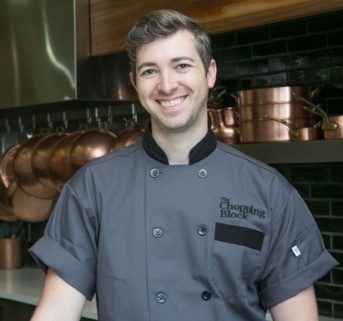A lot of people make a big show of saying they “don’t like pancakes” or that they “prefer waffles” as though they were somehow mutually exclusive. Well call me very lame (as many do), but I think those people just haven’t had a cartoonishly perfect, fluffy, delicious pancake before.
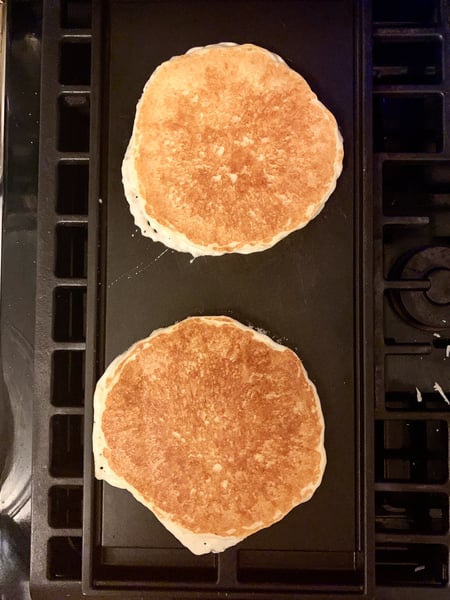
Today you and I, dear reader, will learn how to correct that. We can be agents for positive change in the arena of breakfast food! A couple years ago I was trying to remember what pancake recipe my parents used when I was growing up because, though it was unlikely to be anything special, I hadn’t tasted those pancakes in quite some time. After I found it I made myself a batch, and was genuinely surprised by how good they were. Thinking it was probably just my nostalgic past getting the better of my palate I had my roommate at the time (now a cook at Smyth in the West Loop) try them. He agreed; these might be the best pancakes he had ever had. After many more such trials with different people whose palates I trust, I can definitively say that when this recipe is executed well it really is something special. So now I pass it on to you. Please use your new power responsibly.
The recipe is from the 1978 edition of the Better homes and Gardens Complete Step~by~Step Cookbook, and makes about four 6” pancakes.
Pancakes
1 egg
1 1/4 cups buttermilk
2 tablespoons cooking oil
1 cup all-purpose flour
1 tablespoon sugar
2 teaspoons baking powder
1/2 teaspoon baking soda
1/2 teaspoon salt
Mix all dry ingredients (flour, sugar, baking powder/soda, salt) in a large mixing bowl.
In a smaller mixing bowl, whisk together wet ingredients (egg, buttermilk, cooking oil).
Add the wet ingredients to the dry, and mix together until it just comes together into a batter. It's okay if there are still lots of small lumps. They will work themselves out during cooking. Its far better to have a lumpy batter than an over-mixed tough pancake.
Or, if you have a kitchen scale, you can use the by-weight recipe below. If you’ve never cooked a recipe by weight before I highly recommend you give it a shot. The measurements are more accurate which means a more consistent end result, and the best part is instead of dirtying measuring cups, and spoons, and multiple bowls you only end up with one dirty bowl and a couple utensils. It’s faster too.
Scroll down for a printable version of this recipe.
55 grams egg
350 grams buttermilk
25 grams cooking oil
145 grams all-purpose flour
15 grams sugar
8 grams baking powder
3 grams baking soda
2 grams salt
For this method, place a large mixing bowl on top of your scale, and make sure it is zeroed. Then measure into the bowl all the dry ingredients (flour, sugar, baking powder/soda, salt), making sure to zero the scale in between each addition.
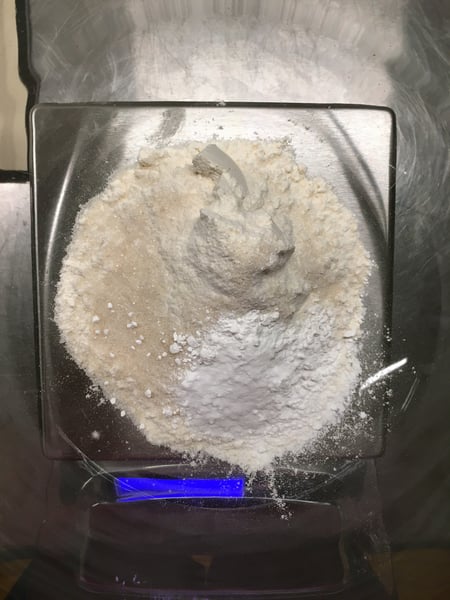
Make a well in the middle of the dry ingredients as if you were making pasta, and measure into the well all the wet ingredients (egg, buttermilk, cooking oil).
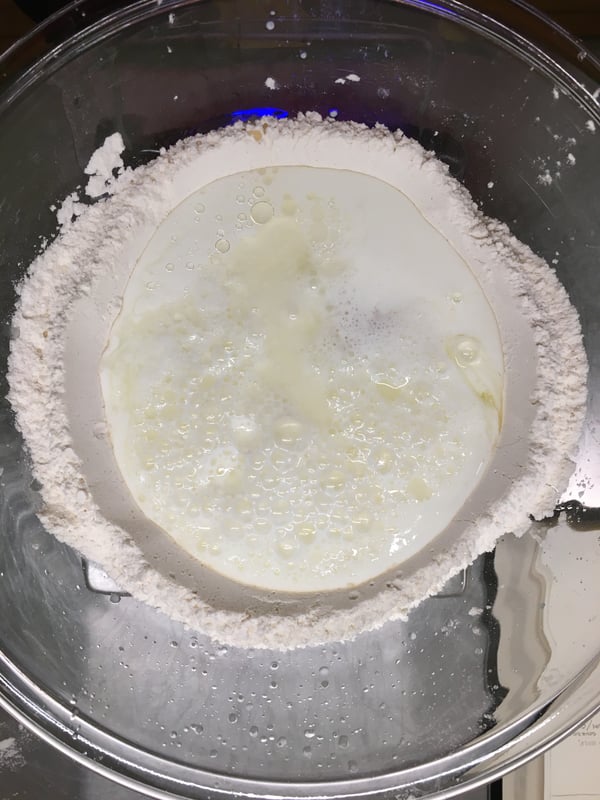
Whisk together the wet ingredients, then use a rubber spatula to combine with the dry ingredients until just mixed. There should still be lots of small lumps in the batter.
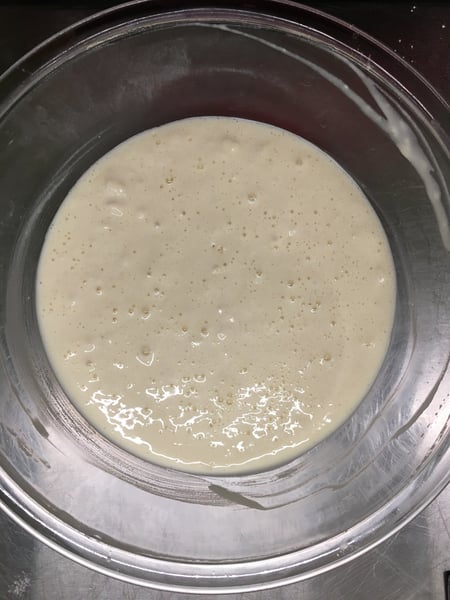
Pour your preferred amount of batter (I use a four ounce ladle) onto a dry, preheated griddle or pan, flip once you see set bubbles around the edges of the pancake, and finish cooking for a couple minutes on the second side.
Remove to a plate and enjoy.
I have spent probably more time than I should thinking about producing good pancakes, and I’ve found that there are four guidelines that will help you get a fantastic result every time. They are as follows:
1. Don’t over-mix the batter - As mentioned in the recipe you only want to mix the batter until it just comes together. Lumps are okay! Over mixing will develop too much gluten in the batter leading to tough, chewy pancakes.
2. Watch your heat - One of the most common mistakes most people make when preparing pancakes is to turn their burners up too high. They get impatient for the pan to heat up, and then end up with pancakes that are too dark, or inconsistently browned, or even burned. This is the most common cause of the “throw out the first pancake” syndrome so many suffer from. You want even, fairly low heat. I usually start pre-heating my pan over low heat when I start making the batter so that by the time I’m done the pan is ready to go. It's hard to convey exactly what you should be setting you burners to since different types vary so widely, but in case it helps I included a photo of my burner during the cooking process so you can see what I do.
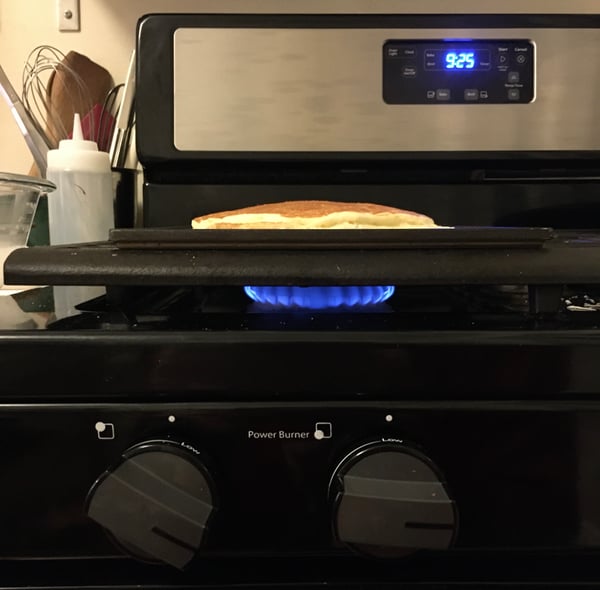
3. Don’t use cooking fat - This is the real secret to the technique. If you want those perfect edge to edge golden brown tops and bottoms on your pancakes leave the pan totally dry. No butter, no cooking oil, no nothing. It can feel scary, but this should work no matter what type of pan you’re using be it an aluminum griddle like me, or cast iron, or non-stick, you should still be able to get amazing pancakes with no cooking oil on your pan.
4. Look for set bubbles on the edges - This is the best trick I’ve found to let you know when the pancake is ready to flip. If you have your heat set properly this never fails. Once the bubbles on the edges pop, and don’t fill back in with liquid batter you can be sure it is ready to flip, and upon so-doing it will reveal a perfectly golden brown surface.
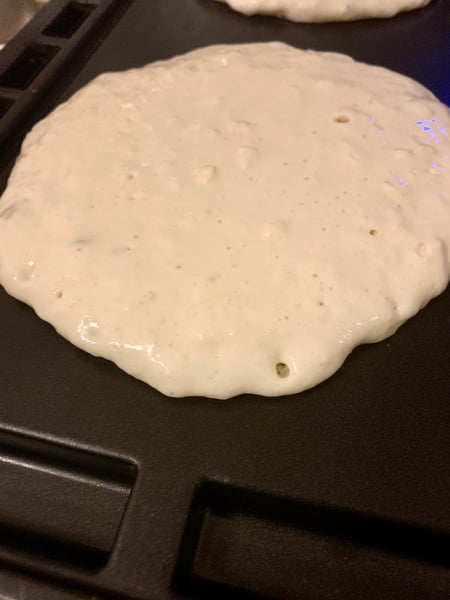
Now all that's left is to top your cakes with delicious salted butter, and one of the world’s delicious products: grade B maple syrup.
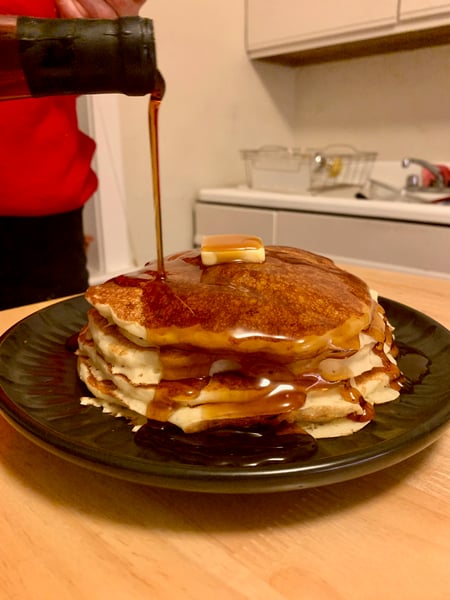
Now that you’re a master of the arcane rites of pancake cookery, check out The Chopping Block's upcoming Bloody Mary Brunch class for more secrets of the breakfast arts.
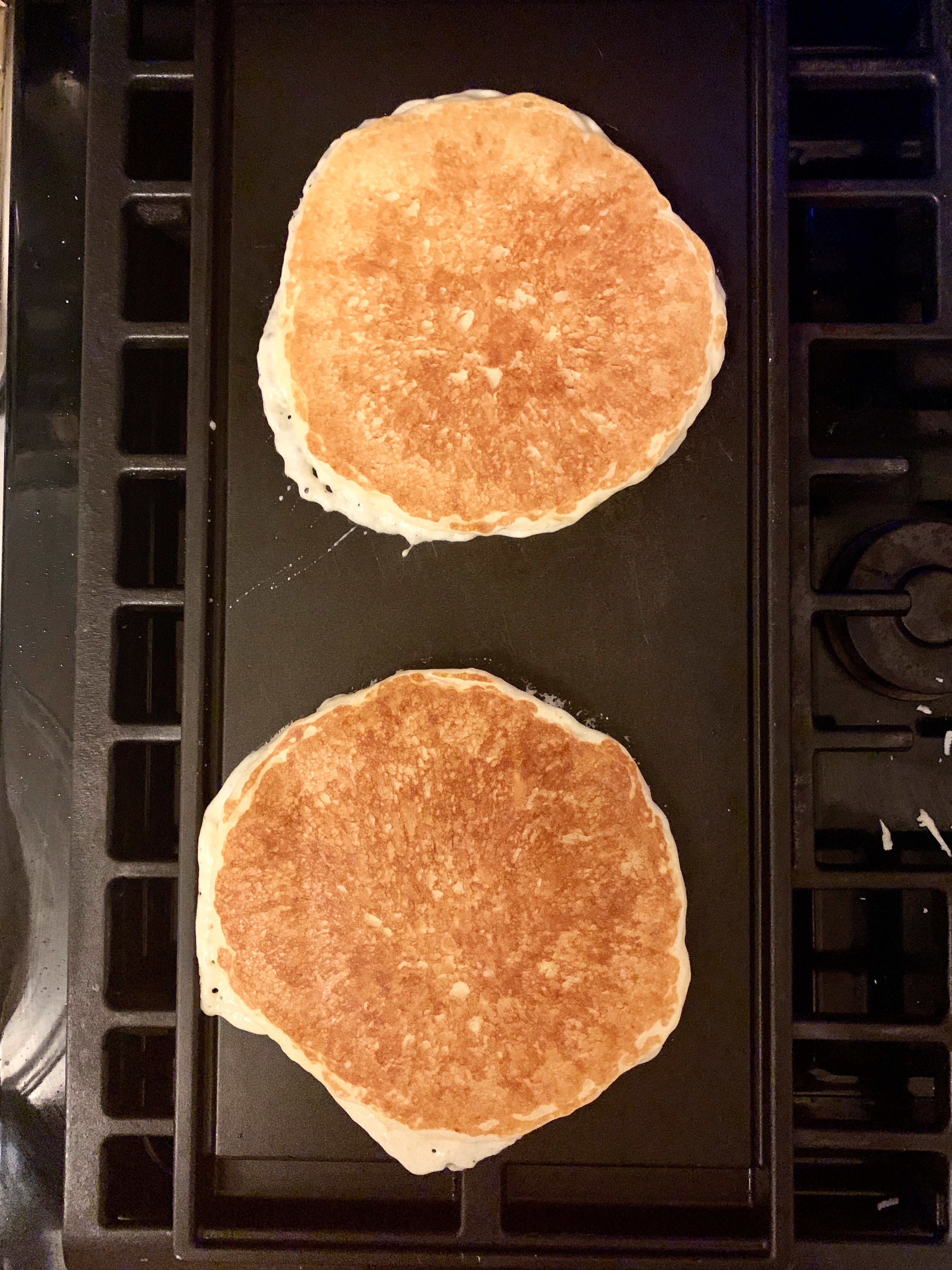
Pancakes
Ingredients:
- 55 grams egg
- 350 grams buttermilk
- 25 grams cooking oil
- 145 grams all-purpose flour
- 15 grams sugar
- 8 grams baking powder
- 3 grams baking soda
- 2 grams salt
Instructions:
- For this method, place a large mixing bowl on top of your scale, and make sure it is zeroed. Then measure into the bowl all the dry ingredients (flour, sugar, baking powder/soda, salt), making sure to zero the scale in between each addition.
- Make a well in the middle of the dry ingredients as if you were making pasta, and measure into the well all the wet ingredients (egg, buttermilk, cooking oil).
- Whisk together the wet ingredients, then use a rubber spatula to combine with the dry ingredients until just mixed. There should still be lots of small lumps in the batter.
- Pour your preferred amount of batter (I use a four ounce ladle) onto a dry, preheated griddle or pan, flip once you see set bubbles around the edges of the pancake, and finish cooking for a couple minutes on the second side.
- Remove to a plate and enjoy.


